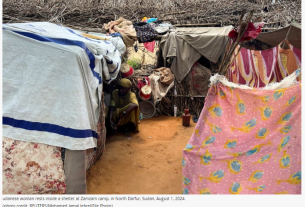London, New York and Paris have been named the world’s most dynamic and liveable cities. This is according to a new ranking of global cities that highlights Europe’s ability to balance sustainability and growth in its urban centres.
The IESE Cities in Motion index looks at 183 cities in 92 countries, and ranks them in nine key areas: human capital, social cohesion, economy, governance, environment, mobility and transportation, urban planning, international profile and technology. It’s different from other indices in that it takes into account so many metrics – more than 100 – on everything from ease of starting a business to number of museums and art galleries, internet speed and commute times.
The idea is to systematically gauge what makes a city the sort of place where people want to live and work. This is important not just for the quality of life of habitual residents, but also because location is vital for attracting global talent, especially among younger generations.
What makes the winners?
The top 10 cities in the 2025 edition were London, New York, Paris, Tokyo, Berlin, Washington DC, Copenhagen, Oslo, Singapore and San Francisco.
The top three all do particularly well in human capital, which includes features like educational and cultural institutions. They also score highly on international profile, which looks at indicators of global interest, such as the number of airport passengers and hotels.
Beyond those two areas, London cements its status as a global hub of high-level innovation and development, also standing out for governance and urban planning. The UK capital is somewhat weaker in social cohesion, where it came 20th, though not nearly as bad as second-place New York, which ranked 127th out of 183 cities in this category – among the lowest of developed countries. New York does, however, stand out for its economic performance, and does very well in mobility and transportation.
Paris, meanwhile, performs well across many metrics, including urban planning as well as international profile and human capital.
What Europe gets right
We’ve been calculating the index for a decade now, and European cities consistently perform well. This year, five of the top 10 cities – London, Paris, Berlin, Copenhagen and Oslo – are European.
We adjust the index on a regular basis in order to make sure that we’re measuring what’s relevant. For example, this year we introduced new metrics on women’s leadership, renewable energy sources and green spaces, as well as on availability of coworking spaces.
There’s no single reason behind Europe’s success, but there are patterns. Its large global metropolises, such as London and Paris, offer advanced technology, international communities and diversified economies in services, technology and finance. They have generally stable political systems and reasonable urban planning, along with advanced public and private transport options. However, while highly diverse, they also suffer from income inequalities.
In addition to these mega cities, Europe is home to a large number of sustainable and culturally vibrant cities of many sizes. All the Spanish cities included in the index (10 in total, including Madrid and Barcelona) are part of this cluster.
These are mature economies that prioritise sustainability over rapid growth, seeking to balance liveability and stability. They also have steady political systems, a commitment to green policies and urban planning strategies that give weight to sustainable infrastructure that enhances liveability.
They do well in social cohesion, with high levels of integration and relatively low levels of inequality. In terms of technology, they are steady adopters but they are not, for the most part, trailblazing innovators.
It’s also interesting to note the performance of North American cities, which show that economic might and technological prowess don’t always translate into more liveable metropolises. US cities dominate the economic dimension – eight of the top 10 in economic performance are American – but there’s not a single American city in the top 10 for social cohesion or environment. They do well in our ranking – New York, Washington, San Francisco, Chicago and Boston are all in the top 20 – as would be expected of high-income cities, but their performance in different areas varies widely.
Meanwhile, developing countries continue to struggle to break into the top ranks. In Latin America, the highest-ranked city is Santiago (89th), followed by Buenos Aires (117th) and Mexico City (118th). In Africa, Cape Town (156th) is the top-ranked city. At the very bottom of the ranking are Lagos, Lahore and Karachi.
Recommendations for cities
In this tenth edition, we are starting to see greater homogeneity of cities, suggesting that urban planners are learning how to confront similar social, economic and geopolitical challenges. Here are some of our recommendations for how they can improve further:
-
Adaptive and participatory planning: Cities should adopt an approach to planning that is both inclusive and adaptive. This means actively engaging residents, businesses and organisations in identifying priorities, and establishing mechanisms to respond to unexpected developments.
-
Sustainability as a core principle: A commitment to environmental sustainability and innovation in urban planning is key. Cities should pursue policies that reduce carbon emissions, such as adopting renewable energy. Their strategies must also factor in environmental impact and preparedness for extreme climate events, such as wildfires or floods.
-
Economic and social resilience: To address economic inequalities and a lack of social cohesion, cities should implement policies that foster economic equity, such as incentives for small businesses and job training programs that improve access to employment. They should also develop community support networks that strengthen social ties and promote the integration of vulnerable groups.
-
Inclusive technology: To close the digital divide, cities should develop a robust technological infrastructure that ensures connectivity across all urban areas and provides digital skills training for residents. Open data platforms that enhance transparency and encourage citizen participation can play a key role in this.
-
International cooperation: Cities should actively participate in international networks to foster mutual learning and best practices, and to collaborate on joint projects.
-
Continuous measurement: Metrics are essential, both to track progress and to benchmark against other cities with similar characteristics. While cities should develop their own performance dashboards with relevant indicators, our index can serve as an initial framework for identifying key dimensions and the most important indicators.



